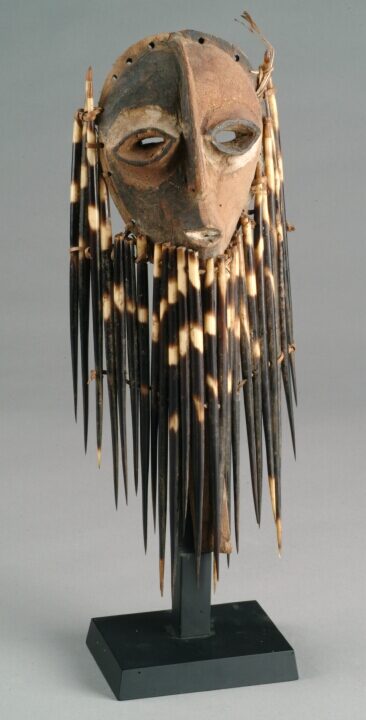Mask
Bembe

Description
Subject Matter:
This anthropomorphic mask surrounded by porcupine quills is attributed to the Bembe or the Bembe-Buyu, who today live in the Democratic Republic of the Congo. The bifurcated face is a stylistic feature seen in the masks of the neighboring Buyu. Known as an emangungu or eluba, masks such as this one were worn by dancers during ceremonies of the Butende and Elanda societies, both of which required elaborate initiation rites for its members. This particular mask joins the spirits of the ancestors—represented by the human face—with those of the forest—symbolized by the porcupine quills. In the secluded initiation camps set deep in the hinterlands, the spirits associated with these masks were charged with guarding and protecting the young initiates from danger, as well as, finding provisions and gifts for them.
Reference:
Maurer, Evan M. and Niangi Batulukisi. Spirits Embodied: Art of the Congo, Selections from the Helmut F. Stern Collection. Minneapolis: The Minneapolis Institute of Arts, 1999.
Physical Description:
This ovoid, wooden Bembe mask depicts a human face. The right half of the face, however, has been painted black, creating a bifurcated appearance. Its facial characteristics include large, almond-shape eyes set in rounded, ocular cavities; a slender nose; and, an open mouth painted white. Most striking, however, are the long, black and white porcupine quills that have been carefully tied around the mask’s perimeter, yielding a dramatic, formidable look.
Usage Rights:
If you are interested in using an image for a publication, please visit https://umma.umich.edu/request-image/ for more information and to fill out the online Image Rights and Reproductions Request Form.